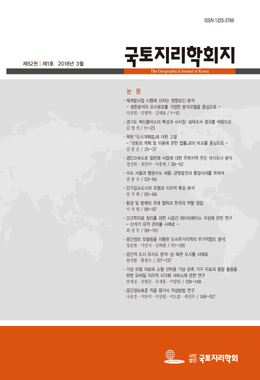이 논문은 제주관광의 관례적이고 전통적인 이미지인 영주십경의 형성과 변화에 대한 문화지리학적 연구이다. 영주십경은 19세기 중반 제주의 유학자 이한우가 지은 「영주십경시」에서 비롯되었다. 제주의 자연과 문화를 대표하는 10개의 상징경관은 현대에 들어와서도 계속 영향력을 발휘해서 20세기 후반 제주관광에서 주요관광지로 추천되었다. 본 연구는 첫째, 조선시대에 영주십경은 18세기 초반의 『탐라십경도』에서 연원했으나, 경승지에 대한 찬미에 머물지 않고 점차 제주의 자연과 문화를 전체적으로 대표하는 상징경관의 지위로 진화하는 과정을 탐구한다. 즉, 영주십경은 19세기 유학자들이 제주의 자연과 문화를 보는 새로운 방식(a new way of seeing)으로 자리잡았다. 둘째, 19세기말과 일제강점기에 영주십경의 문화적 중요성이 약화되고 제주를 바라보는 새로운 개발주의적, 제국주의적, 과학적, 미학적 시각이 출현하는 과정을 탐구한다.
The research examines the construction and transformation of Youngju-Sipkyoung, a series of symbolic images that has been used in Jeju Tourism. Youngju-Sipkyoung is well-known through 「Youngju-Sipkyoungsi」, work of maegye Lee Han-Woo, Confucian scholar, native of Jeju island. The ten symbolic scenery of Jeju, representing nature and culture of the island, had played a significant role in modern tourism of Jeju for some time especially in the late 20th century. The purpose of study is as follows. First, the paper examines the way Youngju-Sipkyoung, originated from 『Tamra-Sipkyoungdo』 produced in the early 18th century, had evolved into ‘a new way of seeing’ the culture and nature of Jeju island of Confucian scholars in 19th century. Second, the paper also examines how the construction of modern, developmental, scientific, aesthetic vision of Jeju island in the early 20th century had significantly undermined the cultural importance of Youngju-Sipkyoung.




